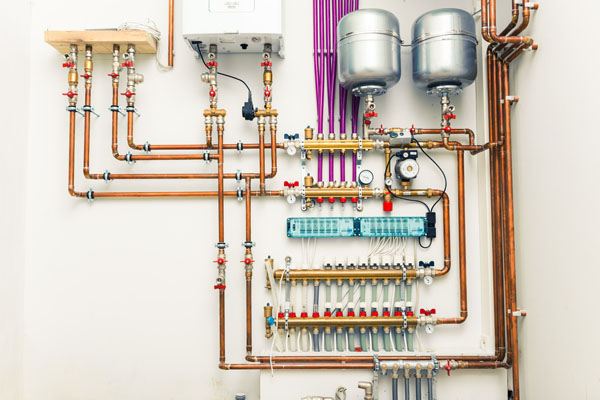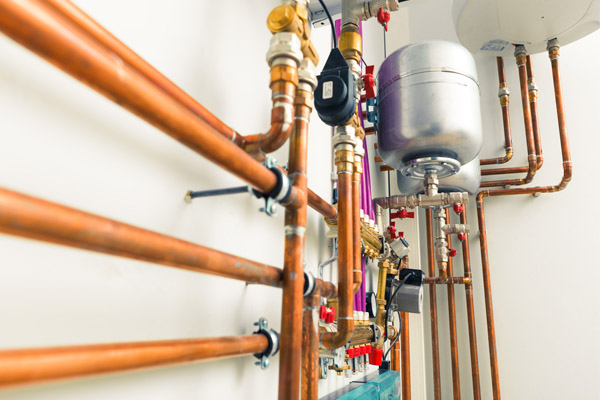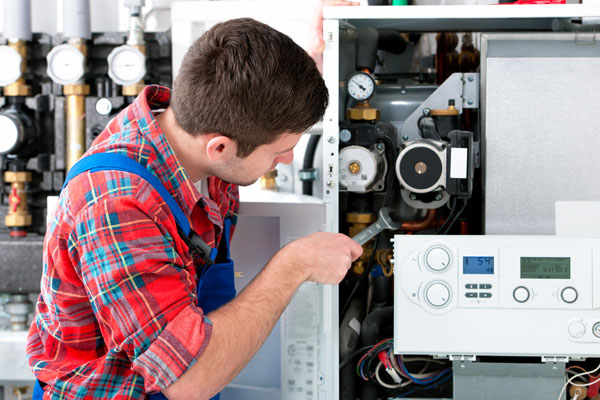
Has your water heater made a sound that made you wonder if it might explode? Do you hear a loud boom when you turn off the shower? Has an HVAC expert told you that you need to replace your boiler expansion tank? If so, don’t fret! Boiler expansion tanks are important parts of water heating systems. In this article, we will discuss everything you need to know about boiler expansion tanks.
What Is A Boiler Expansion Tank?
A boiler expansion tank is located on top of the water boiler’s main water tank, allowing room for water to escape during the expansion of heated water. A diaphragm sits in the middle of the expansion tank, separating the tank into two sections. One side is where the expanding water escapes, while the other acts like an air cushion that adapts to the changes and regulates the pressure building from the heated water.
The expansion tanks used to be single-section units. However, this design was later improved to have two sections. The two sections keep the air from getting inside the boiler and causing corrosion. Expansion tanks also help in the heating or cooling processes. They are specifically helpful in the elimination of a few causes of water hammer or hydraulic shock. Here are some more details about the water hammer and its symptoms.
What Is A Water Hammer?
Also known as hydraulic shock, a water hammer is a common occurrence resulting from a worn-out heating unit. You might have heard a loud banging sound when switching off the water in your bathtub or faucet. This noise is because of the abrupt change in the water flow direction, sending out shock waves. This can be a huge annoyance. It can also even result in the deterioration of your piping and heating systems. Installing a boiler expansion tank will help stop water hammer from happening and preserve your heating unit.
Kinds Of Boiler Expansion Tanks
Two boiler expansion tank models include the steel type and the bladder type. Below is a more detailed look at both models:
Steel Type Expansion Tanks

This kind of expansion tank has been used for decades, and it is often found in older homes. It is not equipped with a diaphragm, so the air and water touch. Therefore, a steel tank is used to prevent corrosion as much as possible. A steel-type expansion tank has a small window referred to as the sight glass. Homeowners use it to view the water to air ratio in this type of tank.
The right water to air ratio is based on several factors. Some of these are the convector materials (typically iron or copper) and the heating tank capacity, among other factors. Since water and air mix, some problems that can arise from having steel tanks are faulty gaskets, tank flooding, and corrosion. An expert can help you fit your boiler or water heater with an appropriately sized steel-type expansion tank.
Bladder Type Expansion Tanks
The crucial difference a bladder tank has from a steel tank is that the former has a diaphragm. It is what separates the air and water within the expansion tank. Therefore, its capabilities last longer, but it doesn’t mean that air in the system issue is removed completely. The air in a heating system that has a bladder expansion tank still separates from the water. Therefore, the air needs to be eliminated from the system. Have a professional help you ensure that the system has the right amount of pressure. An HVAC expert will also help you find the most suitable bladder expansion tank size you’ll need for your boiler tank.
Is Your Expansion Tank Working Properly?

Do you own an expansion tank but aren’t sure if it is working as it should? One of the common reasons for a faulty expansion tank is the incorrect pressures within the chambers. Steel expansion tanks are equipped with a pressure relief valve that could be venting water. This is an indication that there’s a problem with the pressures within the tank. Check the water level via the sight glass to see if the pressure is off. If you have a bladder tank, take a look at the pressure on the air section of the diaphragm. This will let you know if the water lines need to be drained so that the bladder can be refilled with air.
Conclusion
Many heating systems have one or more boiler expansion tanks. However, only a few really understand what they are used for. The systems and their expansion tanks help in pressure regulation within the heating system when water is heated in the boiler tank. Therefore, this nifty reservoir helps prevent many boiler tank problems like overpressurization and water hammer. They also help preserve your heating system for a long time. Contact Tevis Energy today for a free installation quote!
Tevis Energy’s sister company, Modern Comfort, performs HVAC installations, replacements, tune-ups, and more. Our technicians can provide you with expert HVAC services to ensure that your system provides you with the comfort and efficiency you deserve. Call now to schedule a free consultation.
Call Tevis Energy For All Of Your HVAC Requirements

For all your high-quality HVAC services needs in central Maryland and southern Pennsylvania, call Tevis Energy. We have the best professionally certified technicians who can conduct top-notch heating and cooling repairs, installations, maintenance, and replacements. Each of our friendly techs has the right tools, years of experience, and extensive knowledge to correctly service any HVAC make and model.
Our company offers one of the most affordable and competitive HVAC service rates in the area. Our tune-up services can enhance your energy efficiency and comfort while reducing the home’s energy costs. When you need HVAC repair or replacement, our techs can recommend the best solutions for your needs while keeping your budget in mind. All our work comes with a guarantee. Schedule your next service appointment and contact Tevis Energy today for a free, in-home estimate.
You can click here to contact us now or call us at (410) 876-6800 to find out more!
